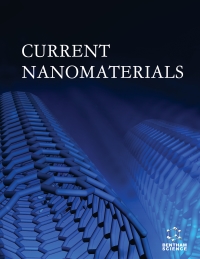- Home
- A-Z Publications
- Current Nanomaterials
- Previous Issues
- Volume 9, Issue 4, 2024
Current Nanomaterials - Volume 9, Issue 4, 2024
Volume 9, Issue 4, 2024
-
-
A Review on Innovative Nanomaterials for Enhancing Energy Performance of the Building Envelope
More LessAuthors: Nouran Ashraf Ali, Samir Sadek and Ahmed AbdinThe greatest threat of the 21st century is global warming. The building sector is a major contributor to energy consumption and greenhouse gas emissions. About 60% of the total energy consumed in the buildings is caused by HVAC systems. Nanotechnology is an emerging technology that an introduce innovative materials in the building sector which offers great potential for development of innovative building products to enh Read More
-
-
-
Zingiber Officinale-assisted Graphene Oxide Green Reduction for Excellent Photocatalysis
More LessAuthors: Krati Saini, Pankaj Chamoli, Ravi K. Shukla, Kamal K. Kar and K. K. RainaIntroduction: A facile approach for producing graphene nanosheets (GNs) has been established by reducing graphene oxide (GO) with ginger extract (GEx) at low temperature. The elimination of oxygen characteristics from GO has been validated by a Raman study. Method: FTIR analysis also supports the Raman signatures of the removal of oxygen species from the carbon core. Surface analysis confirms the remarkable Read More
-
-
-
Unlocking the Microbial Potential of Intercalated Calcium-aluminum Layered Double Hydroxide-palmitic Acid
More LessIntroduction: An efficient and coherent drug delivery system is imperative in detouring a repetitive administration of high doses of the drug to achieve an effective therapeutic effect. This study, therefore, aims to synthesize the nanocomposite (CAPA) utilizing the layered double hydroxide as a drug carrier that can safeguard the medicine and improve its bioavailability while minimizing the adverse impact on the biological p Read More
-
-
-
Preparation and Optimization of Gemcitabine Loaded PLGA Nanoparticle Using Box-Behnken Design for Targeting to Brain: In Vitro Characterization, Cytotoxicity and Apoptosis Study
More LessBackground: Treatment of glioma with conventional approaches remains a far-reaching target to provide the desired outcome. This study aimed to develop and optimize Gemcitabine hydrochloride- loaded PLGA nanoparticles (GNPs) using the Box-Behnken design methodology. The independent variables chosen for this study included the quantity of Polymer (PLGA) (X1), Tween 80 (X2), and Sonication time (X3), whereas the depe Read More
-
-
-
Development of Wheatgrass (Triticum aestivum) Extract Loaded Solid Lipid Nanoparticles using Central Composite Design and its Characterization- Its In-vitro Anti-cancer Activity
More LessAuthors: Neha Minocha, Parijat Pandey, Nidhi Sharma and Sangita SainiBackground: The prevalence of cancer is around the world and is identified as a multifactorial ailment. One of the most common causes of cancer in the world is oxidative stress, and this can be overcome by taking herbal plant wheatgrass in any form. As colloidal carriers with particle sizes of 50-1,000nm, Solid Lipid Nanoparticles (SLNs) combine the benefits of liposomes, emulsions, and other colloidal systems to deliver drugs Read More
-
-
-
Quantitative Characterization of the Effect of Biogenic silver-based Nanoparticles on Breast Cancer Cells by High Content Analysis
More LessAuthors: Veronica Ferreira, Mateus Eugenio, Elaine Del Nery, Wanderley de Souza and Celso Sant''AnnaBackground: Among the various types of cancer, breast cancer is the most incident among women. Due to the resistance to antitumor treatments, alternative treatments have been sought, such as metallic nanoparticles. Objective: This study aimed to evaluate the antitumor potential and cytotoxicity induction mechanisms of green synthesized AgCl-NPs and Ag/AgCl-NPs. Methods: The antitumor potential of nanoparticles w Read More
-
-
-
Progress on Polyolefin/Graphene Nanocomposites with High Dielectric Constant and Low Dielectric Loss for Electrical Applications
More LessAuthors: Haia Aldosari, Nawal Madkhali, Saja Algasser and M. KhairyIntroduction: The attached oxygen functional group in graphene oxide (GO) with layers that are about 1.1 ± 0.2 nm thick, has hindered the performance of electrical characteristics. Diminution of the oxygen functional group, and increasing the carbon/oxygen (C/O) ratio can enhance electrical conductivity. Method: This study investigated the effect of graphene derivatives (C/O) ratios on the dielectric properties of low- Read More
-
Most Read This Month
Article
content/journals/cnm
Journal
10
5
false
en


